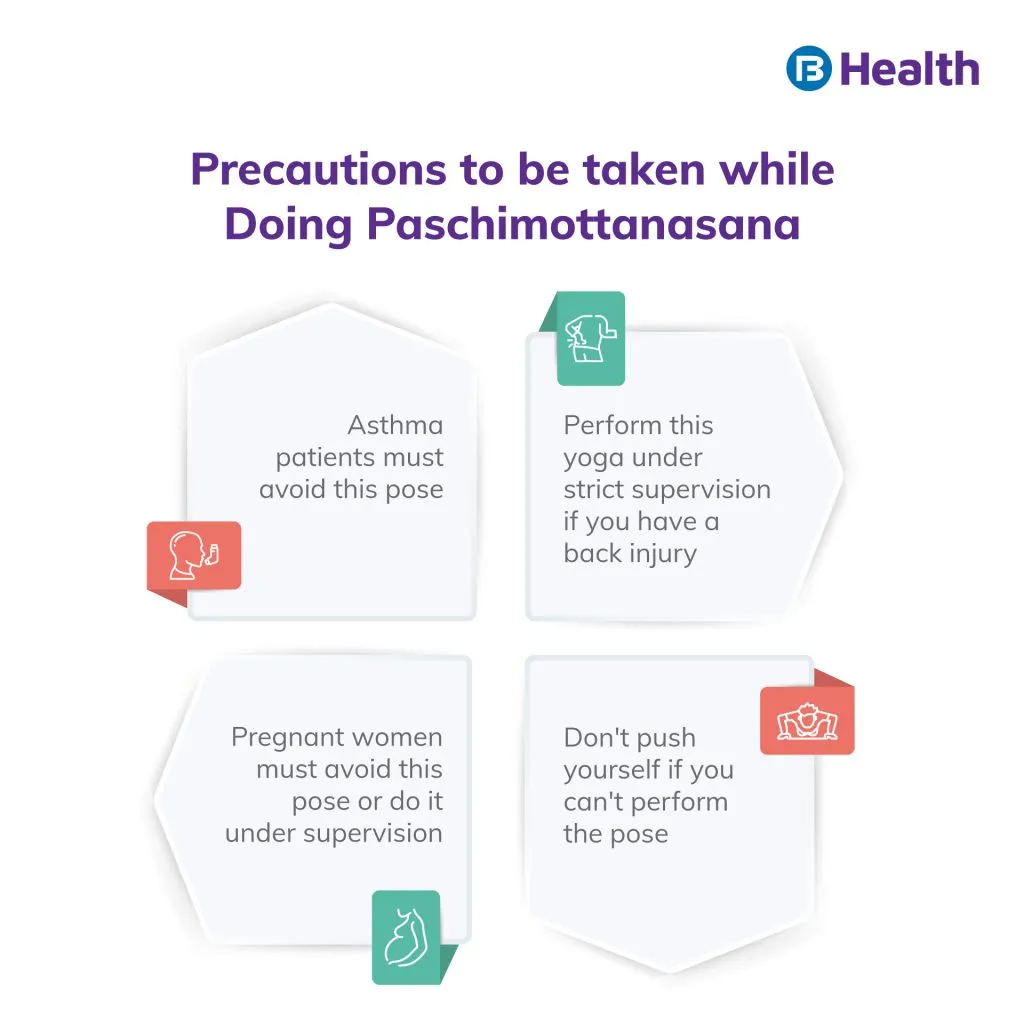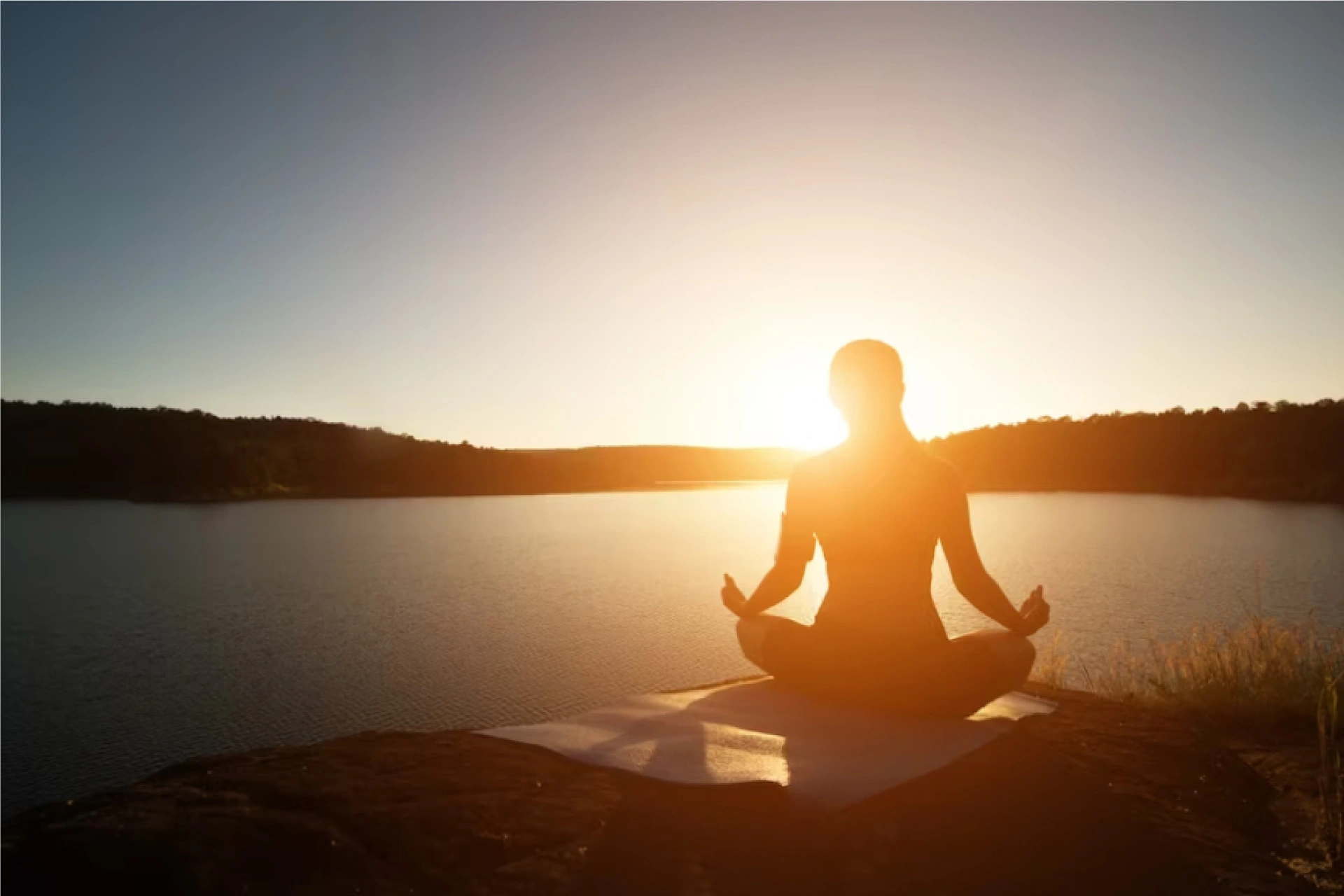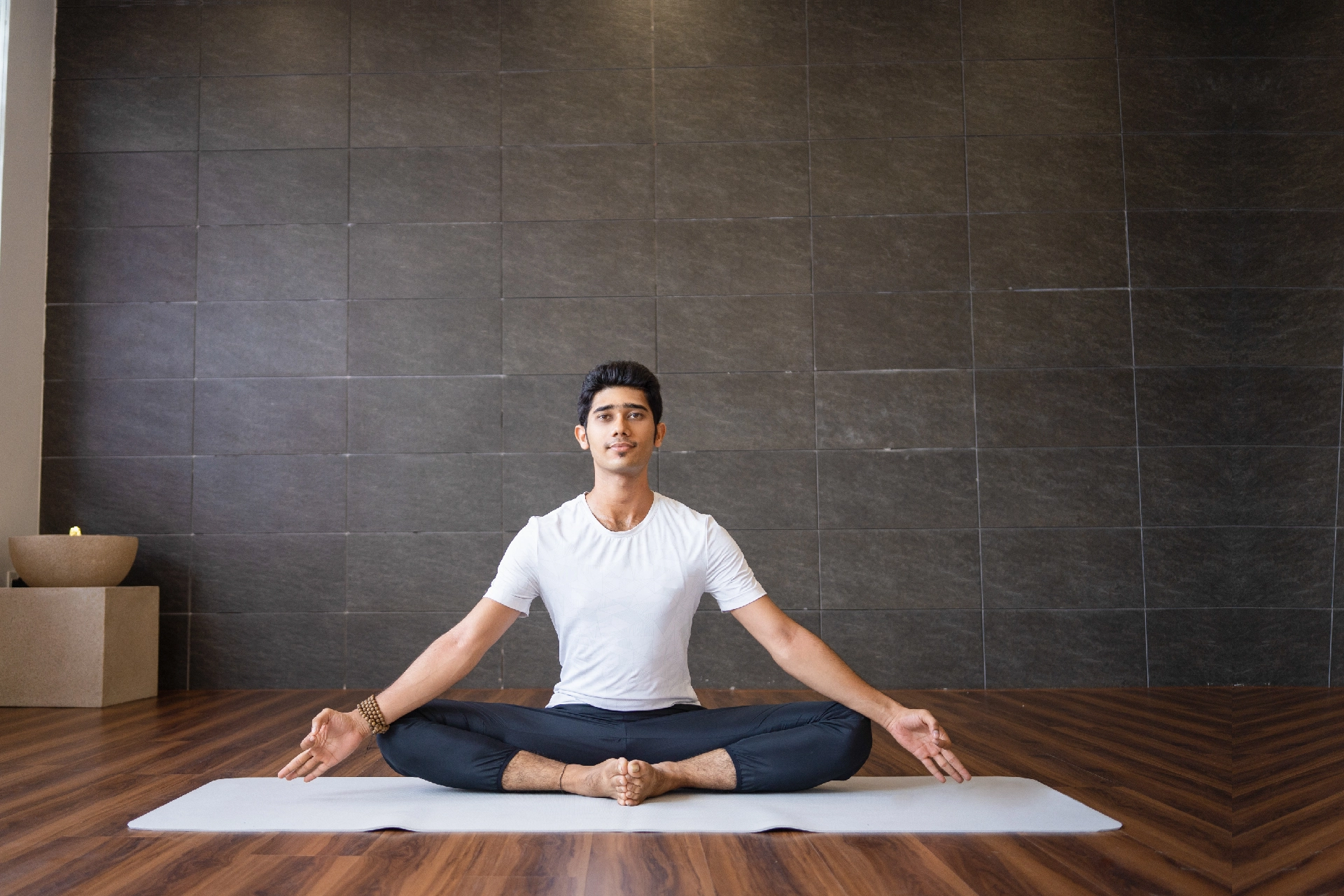Physiotherapist | 7 min read
Paschimottanasana: Benefits, Precautions and Steps to Do It
Medically reviewed by
Table of Content
Synopsis
The Paschimottanasana is a form of yoga that brings mental calm by stretching the entire back of the body. Extending the top half of the body over the seated lower half improves physical flexibility as well as offers calmness.
Key Takeaways
- Paschimottanasana is beneficial not only for physical but also for mental health
- Paschimottanasana is a foundation yoga pose that will help you in achieving physical flexibility
- To get maximum benefit from Paschimottanasana, you need to be careful and diligent
According to Bhagavad-Gita, a person is said to have attained yoga, the union with the self, when the disciplined mind gets freedom from all desires, anxiety, and stress and becomes absorbed in the self alone. The ultimate aim of yoga is to help the individual to transcend the self and achieve enlightenment. Ayurveda highly promotes practising yoga. Ayurveda says yoga and Ayurveda are interrelated. Ayurveda rejuvenates the human body; on the other hand, yoga helps purify the mind and soul [1].
There are different types of Asanas; Paschimottanasana yoga is said to be a foundation pose among them. It helps to manage diabetes, digestion, constipation and many more. Explore this blog to seek more information.
What is Paschimottanasana?
The Paschimottanasana is also known as seated forward bend, seated forward fold and intense dorsal stretch. This asana is done in a seating position by extending the upper half of the body to the lower half and bringing the head and arm close to the knees, thighs and calves. Too much weight training exercise and sitting may affect your back, legs, and hips. This asana helps to counter that. By stretching the entire back, you can enhance the flexibility of your hips, spine, and lower back. The more you practice this pose, you will understand how your emotions affect physical flexibility. With a disciplined routine, you will be able to relieve tension and stress and attain mental peace.
The Paschimottanasana yoga appears in the Hata yoga texts, including Shiva Samhita and Hatha Yoga Pradipika. According to Hata Yoga Pradipika, with this asana, the pranic current rise through Sushumna Nadi. As a result, the abdomen becomes flat, the digestive fire increases, and the yoga practitioner is freed from diseases. The Sanskrit meaning of this terminology is the intense stretch of the west pose. This Hata yoga stance offers several health benefits.
Additional Read: Autumn Yoga Poses
Paschimottanasana Benefits
Decreased Anxiety
You may notice a huge difference in your anxiety level by performing the seated forward bend pose regularly. The Paschimottanasana activates the central nervous system. As a result, nervous and pranic impulses pass directly to the higher centers. Hence, this asana calms brain cells and lowers stress, anxiety, and depression level. You can also do this asana by placing the pillow under the hip bones for faster stress release.
Corrects Body Posture
Body posture not only gives an impression on personality but also affects our health. Bad body posture may lead to health problems like gastrointestinal problems and abdominal dysfunction. Regularly practicing this asana helps straighten your upper body and reduces the risk of health problems.
Additional Read: Yoga For Belly FatImproves digestion
The forward and backward movement removes excessive abdominal and thigh fat. It helps to improve digestion by removing GI tract issues like gas and constipation.
Regulates menstrual discomfort
Irregular periods and menstrual discomfort is the problem faced by half of the women. Thus, Paschimottanasana benefits lower menstrual issues by increasing blood flow and reducing fatigue. Although, it is advised to perform asana by placing a soft pillow on the lap to lower the abdominal pain caused due to exerting pressure on that area. It also helps to manage PCOS/PCOD by stimulating the ovaries and the uterus.
Good Sleep
Suppose you suffer from sleep disorders; Paschimottanasana benefits by keeping insomnia at bay and ensuring a good, peaceful sleep. Practicing the posture for two hours before your sleep increases blood flow and lowers energy centers that will provide a calm sleep.
Additional Read: Yoga for High Blood PressureRegulates diabetes
Diabetes is a lifestyle disease caused due to unhealthy eating habits. If it is not maintained, it may cause life-threatening health conditions.
The Paschimottanasana improves the functioning of the pancreas and renal system and keeps blood sugar levels in check.
Manages Erectile Dysfunction
Erectile dysfunction is common in males. It occurs due to stress and blockage in the blood flow. The Paschimottanasana benefits males in managing ED by relaxing pelvic muscles and promoting blood flow [2].
It also comes under the list of yoga for belly fat, yoga for high blood pressure, and yoga for back pain. Thus, a daily practice may protect you from various health problems.
Preparation For Paschimottanasana Yoga
Here are a few other poses that will support doing Paschimottanasana
Hip Exercise
If you are in the initial stages of building hip flexibility, you can try triangle, angel, garland, and bow poses. Do not be hard on yourself. Try only as much as you can.
Lower Back Exercise
To improve lower back flexibility, do dynamic moments of Paschimottanasana, like moving forward and back a few times, or try camel, cobra, and locust poses.
Paschimottanasana Step To Do
Steps to perform Paschimottanasana
- Sit in Dandasana with your legs stretched straight in front of you. Keep your spine straight, and toes flexed towards you
- Inhale, raise your arms over your head and stretch
- Exhale and bend forward
- As you exhale, feel the fold from your hip and keep the spine straight. Focus on moving towards toes rather than to knees. Your chin should move toward your toes
- Stretch your arms and try to reach your toes. Do not stretch too far. If comfortable, grab hold of the toes
- Inhale, lift your head straight and elongate your spine
- Exhale and try to take your navel close to the knees
- Repeat this process a few times. Let your breath go deeper in the pose
- Then place your head on the leg and hold the posture
- Inhale and return to your sitting position with your arms stretched out
- Breathe out and lower the arm
Paschimottanasana Variations
Easy variations
- As a beginner, you can keep the knees bent and place the chest on the knees
- Hold the ankle, and move the head as close as possible
Practice Tips for Paschimottanasana
Beginner's tip
As a beginner, don't rush the process, be gentle with yourself. If you feel like the space between the navel and pubis is shortening in a forward bend, it indicates that you are beginning to curve your lower back. Stop, lift a little and straighten your back again.
Practice tips
- Activate your core by pulling the stomach in before bending forward
- Keep your spine steady throughout the posture and look straight. It will help to keep your spine straight
- If you feel more space is needed between the stomach or chest, spread your legs slightly. Not more than the hip's width
- Try to keep your knees straight throughout the practice. If not possible, move the head down without bending the knees. Then bend the knees slightly, bring the head down with ease and hold the knees muscle
- In the final position, your whole body should be in a relaxed state, and breathing should be deep
Paschimottanasana Precautions And Contraindications
While performing Paschimottanasana, extra care is needed. Here are a few precautions needed to be taken care of
- In the beginning, you may tend to curve the lower back a lot which can bring unwanted stress to your vertebral discs. It will be better if you seek advice from professional yoga instructors or those who know about this topic
- Those going through asthma, abdominal ulcers and diarrhoea should avoid Paschimottanasana yoga because it puts extra pressure on your abdomen
- Anyone who is already dealing with back pain, slipped disc and hamstring injuries should not try the seated forward bend pose without the guidance of a certified yoga instructor
- Do not try a seated forward bend during pregnancy without an expert's advice
- If you feel stiffness beneath your knees, use a yoga blanket to support them
- Use a yoga block or cushion if you cannot hold your feet for too long. It will provide more comfort while performing yoga
Duration of Hold
Beginners usually try to take more load. Although, it is better to perform Paschimottanasana for the following duration
- Beginners: 1 to 2 minutes
- Intermediate: 2 to 4 minutes
- Advanced: 4 to 10 minutes
With disciplined exercise, you will find internal and external changes. However, do not force yourself with continuous practice; you will see the transformation over time. In case you are dealing with any health condition, you can take an expert's advice before starting yoga. You can get a consultation with a general physician through Bajaj Finserv Health. Here you can make an online appointment and clear all your concerns at your ease.
References
- https://sitaramretreat.com/ayurveda-yoga-everything-you-need-to-live-a-healthy-life/
- https://bebodywise.com/blog/Paschimottanasana-benefits/
Disclaimer
Please note that this article is solely meant for informational purposes and Bajaj Finserv Health Limited (“BFHL”) does not shoulder any responsibility of the views/advice/information expressed/given by the writer/reviewer/originator. This article should not be considered as a substitute for any medical advice, diagnosis or treatment. Always consult with your trusted physician/qualified healthcare professional to evaluate your medical condition. The above article has been reviewed by a qualified doctor and BFHL is not responsible for any damages for any information or services provided by any third party.





